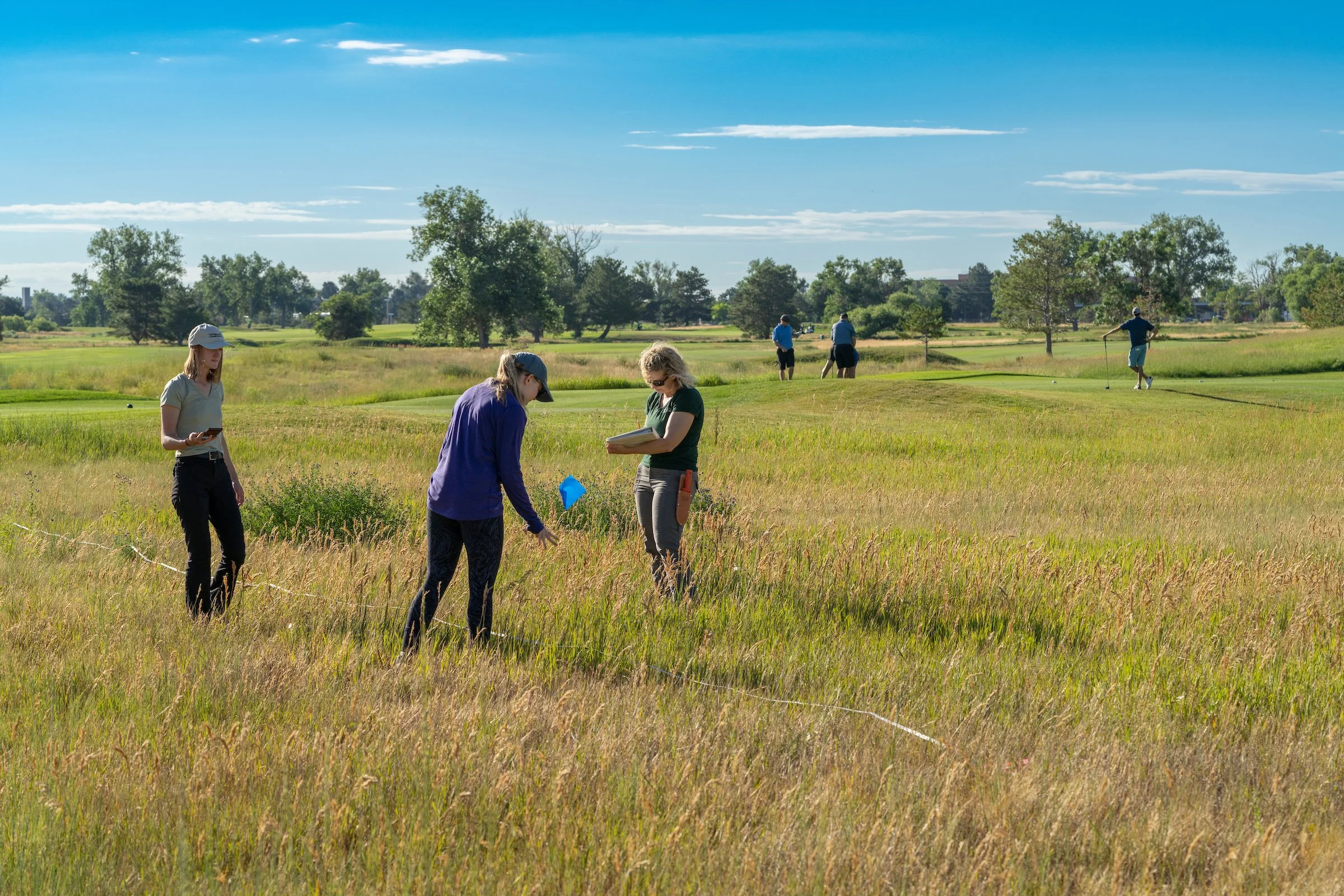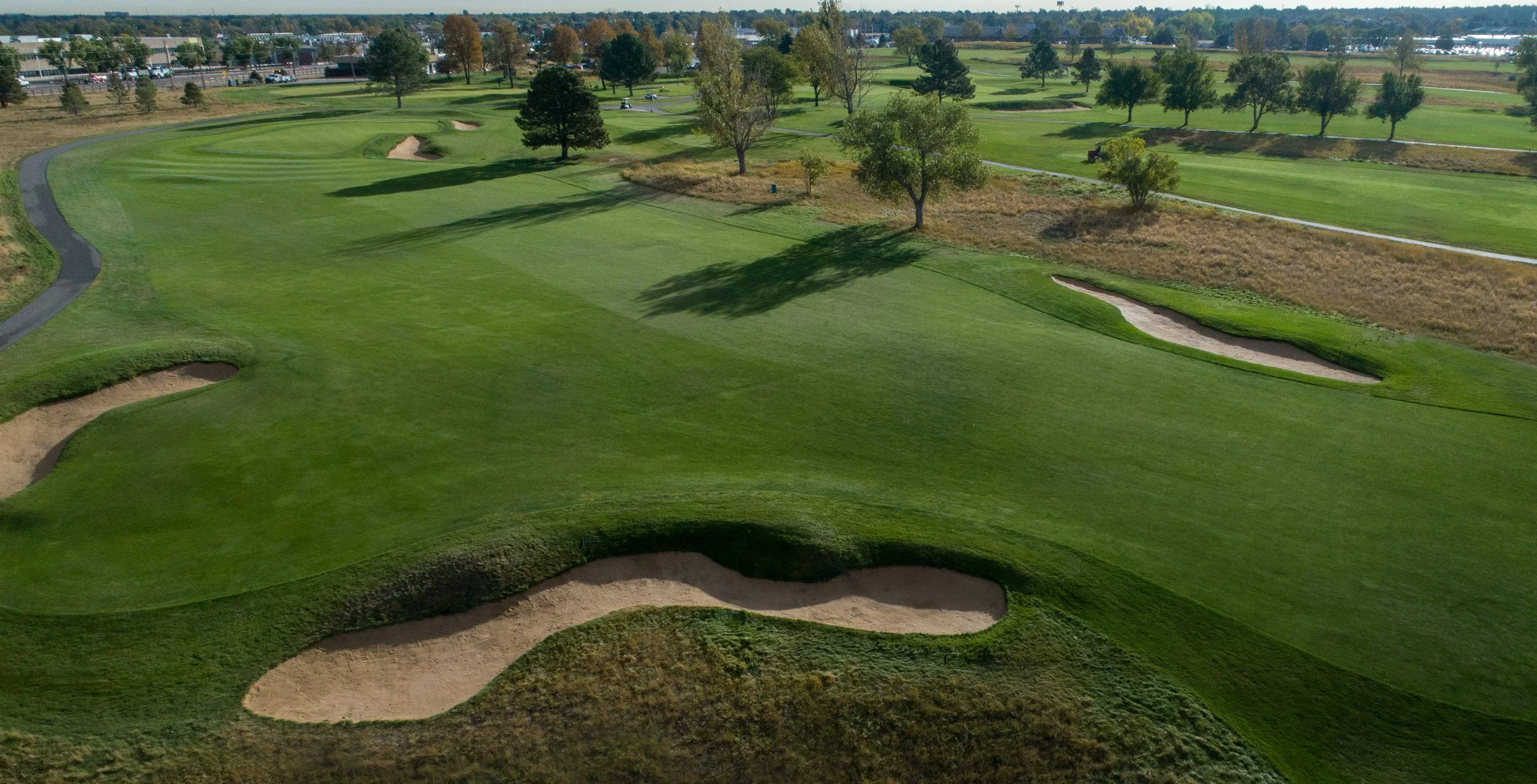Lessons From CommonGround
November 13th, 2025 • By Greener Golf
5 Minute Read
Over the past several weeks, our CommonGround Series has explored how CommonGround Golf Course in Aurora and Denver, Colorado, serves as a leading example of how golf courses can be more than just places to play golf. The goal of this series has been to highlight how intentional design, programming, and partnerships can position golf courses as vital assets within their communities.
For golf to evolve, more courses will need to follow this example. Historically, the game has been associated with high resource use and limited accessibility, a reputation that has made it difficult to justify its place in a world facing water scarcity, increasing land pressure, and a changing climate. If we want golf to endure and thrive, it must demonstrate value beyond recreation. Courses must become tools for environmental resilience and community enrichment, places that conserve, educate, and connect, rather than simply isolate and consume. We at Greener Golf believe CommonGround Golf Course demonstrates how this ethos of environmental and social stewardship can take shape in practice.
As we wrap up this series, we want to reflect on the key lessons from CommonGround that serve as guiding principles for how golf courses can strengthen their purpose, maximize their value, and justify their place in today’s evolving landscape.
Access Increases Community Value
Access is built into CommonGround’s DNA. The course is not just open to the public, it is intentionally designed for the public, inviting as many people as possible to utilize the facility. With a full-length course, a short course, a driving range, a community putting green, and a short-game area, there are countless ways for people of all skill-levels to learn and experience the game. Add in leagues, children and adult-oriented lessons, community events, a caddie program, and local and state tournaments, you get a course that proves that when a golf course prioritizes access, it becomes an indispensable part of its community. Every round played, class attended, or event hosted builds local support and reinforces golf’s relevance within the Denver-Aurora community.
“If you build something that is fun and accessible in the right location, people will play there.” - Ed Mate, Executive Director of the CGA
Through the CGA Golf in Schools program, students learn the fundamentals of the game at CommonGround, many stepping onto a golf course for the very first time.
Ecological Partnerships Are a Win-Win For Golf Courses and Researchers
Golf courses, with their expansive landscapes and abundance of out-of-play areas, are uniquely positioned to serve as sites for meaningful ecological research. Recognizing this opportunity, the Colorado Golf Association partnered with the Denver Botanic Gardens to transform unused portions of CommonGround into living laboratories. The partnership allows Denver Botanic Gardens’ researchers to study native prairie restoration, pollinator activity, and soil health directly on site, work that not only advances ecological science but also informs the course’s own management practices.
These collaborations are mutually beneficial. Researchers gain access to diverse, real-world environments to test and refine sustainable land-management strategies, while superintendents gain valuable data and insights that can enhance turf health, reduce chemical use, and improve long-term resource efficiency. Botanical gardens, in particular, are natural partners for golf courses, offering expertise in native plants, habitat restoration, and long-term monitoring that few other organizations can match.
At Greener Golf, we actively encourage and help facilitate these kinds of partnerships between courses and research institutions. Our work focuses on connecting researchers and students with golf courses interested in advancing their operational practices through science-based solutions. A recent example comes from our collaboration with University of Michigan students and Goat Hill Park in Oceanside, California, where the group identified underutilized areas around the course that could be transformed into high-functioning wildflower habitat. This hands-on research not only helped students apply ecological principles in a real-world setting, but also provided the course with actionable insights for enhancing biodiversity and pollinator health, insights that ultimately guided the creation of a 6,000+ square-foot pollinator garden.
Partnerships like these demonstrate what is possible when golf courses open their gates to science. They create opportunities for research, restoration, and education that benefit everyone involved.
Since 2022, Denver Botanic Gardens has partnered with the Colorado Golf Association at CommonGround to conduct vegetation surveys and test low-cost methods for establishing wildflower habitat in out-of-play areas across the course.
Design With Intent
Thoughtful, strategic golf course architecture that integrates the natural surroundings into the playing environment provides a playing experience that not only excites and challenges the golfer, but provides a connection to nature that imposing a golf course on a landscape misses. Tom Doak and Renaissance Golf Design accomplished this feat at CommonGround with a minimalistic approach to restore and reimagine the golf course landscape that was once occupied by an Air Force base. The golf course design regenerates the connection to nature and engages us in it every time we play at CommonGround.
This intentional design philosophy also extends to how the course plays. CommonGround was built to strike a rare balance, approachable and enjoyable for the everyday golfer, yet strategic and challenging for elite players. Wide fairways, strategically placed bunkers, and gently contoured greens invite creativity and reward thoughtful shot-making without severely punishing inexperience. This balance of accessibility and challenge has made the course a reliable venue for both everyday play and state-wide tournaments.
Hole 9, 368 par 4
The Future of Golf, Taking Shape Today
CommonGround is only one of a growing number of golf courses demonstrating that this model is not only possible, it is replicable. The partnerships, programs, and ecological initiatives highlighted throughout this series can be adapted and replicated in any setting, regardless of size, budget, or geography. The driving force behind these efforts is not necessarily scale or funding, but the intention of a genuine commitment to using golf for something greater.
We want to encourage more courses and conservation groups to initiate these conversations on their own. When researchers, educators, and land stewardship organizations look closer at golf courses, they will find landscapes that are low-investment, high-yield opportunities for conservation, ecological study, and public programming. And when golf courses engage with outside experts, they will discover partnerships that strengthen their operations, reduce inputs and costs, and position their course as a community asset.
The pathway forward is simple: coming together around a shared vision for using these green spaces that already touch so many lives more deliberately and more creatively for public benefit. That means taking seriously the idea that golf courses can be for more than playing golf. When golf courses open their doors, collaborate intentionally, and see their land as a resource for something bigger, the entire community wins.




